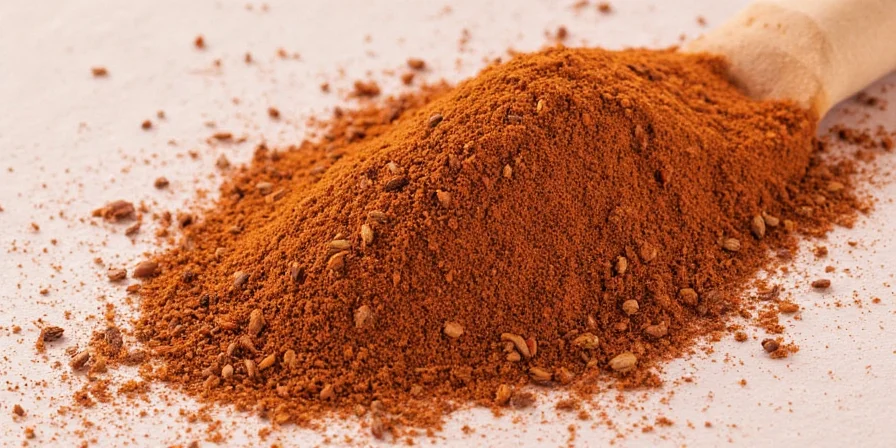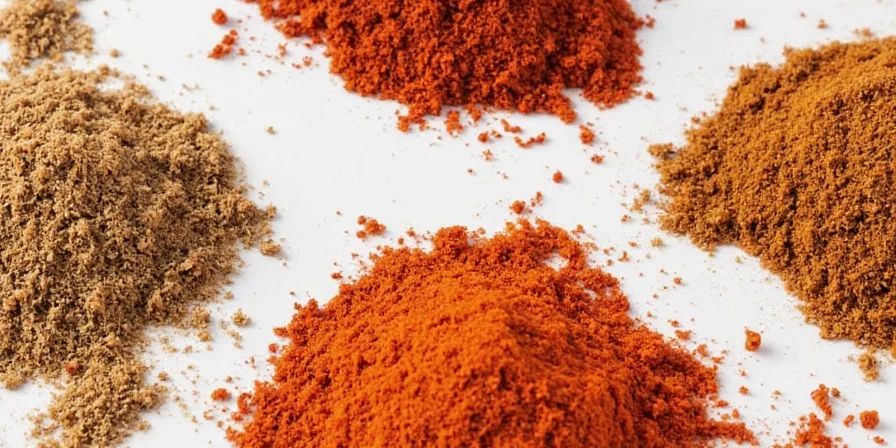Mace spice is primarily used to add warm, complex flavor to both sweet and savory dishes without overpowering other ingredients. Professional chefs rely on it in spice blends, baked goods, creamy sauces, and traditional cuisine where subtle warmth is needed. Unlike nutmeg, mace offers a more delicate profile that enhances dishes like béchamel sauce, pumpkin pie, and garam masala without dominating the flavor profile.
Table of Contents
- Where Mace Excels: Top Culinary Applications
- What Exactly Is Mace Spice?
- The Flavor Profile: Earthy, Warm, and Slightly Sweet
- Cultural Significance in Wellness Traditions
- Pro Tips & Tricks: How to Use Mace Like a Chef
- Mace vs. Nutmeg: The Spice Twins or Rivals?
- From Baking to Beverages: Creative Recipes Featuring Mace
- Where to Buy, How to Store, and When to Toss
Where Mace Excels: Top Culinary Applications
Mace's unique properties make it indispensable in specific cooking scenarios where precision matters. Here's where professional chefs consistently choose mace over other spices:
| Application Type | Specific Uses | Why Mace Works Best |
|---|---|---|
| Cream-based sauces | Béchamel, cheese sauces, custards | Provides warmth without the sweetness of nutmeg that would clash with dairy |
| Fine baking | Sponge cakes, delicate pastries, fruit desserts | Subtle flavor won't overpower lighter ingredients |
| Meat preservation | Traditional sausages, cured meats | Natural preservative qualities with balanced flavor |
| Spice blending | Garam masala, pumpkin spice, speculaas | Creates flavor harmony between stronger spices |
Unlike many spices that work primarily in one category, mace bridges the gap between sweet and savory applications. Its most distinctive use comes in Dutch rijsttafel dishes and British custard-based desserts where its citrusy notes elevate complex flavor profiles without becoming dominant.

What Exactly Is Mace Spice?
Mace comes from the same plant as nutmeg — the Myristica fragrans tree — but is the fleshy, lacy aril that wraps around the nutmeg seed. Once harvested, the red-orange mace arils are dried until amber-colored. This labor-intensive process (requiring 10-12 nutmeg seeds to produce one ounce of mace) explains why mace commands a higher price point than its seed counterpart.
The Flavor Profile: Earthy, Warm, and Slightly Sweet
Mace delivers a sophisticated flavor profile that makes it chefs' secret weapon:
- More refined and complex than nutmeg
- Distinct notes of cinnamon, clove, and black pepper
- Subtle citrus undertones that brighten rich dishes
- Less sweet than nutmeg, with higher heat tolerance
This unique combination allows mace to enhance dishes without dominating them — particularly valuable in applications where balance is crucial.

Cultural Significance in Wellness Traditions
While primarily valued for culinary applications today, mace has historical significance:
- Traditional European apothecaries used mace in warming digestive tonics
- Ayurvedic practitioners incorporated it in balanced spice mixtures for digestive support
- Dutch colonial recipes relied on mace for both flavor and preservation
Pro Tips & Tricks: How to Use Mace Like a Chef
Professional kitchens maximize mace's potential through these techniques:
- Whole blade infusion: Steep one blade in milk or cream for custards and sauces (remove before serving)
- Layered addition: Add ground mace at multiple cooking stages for complex flavor development
- Citrus pairing: Combine with orange zest in baked goods to amplify subtle citrus notes
- Precision measurement: Use ⅛ tsp increments - mace's potency builds gradually
- Heat management: Add early in cooking for infused warmth, late for brighter notes
Mace vs. Nutmeg: When to Choose Which
This comparison helps determine which spice serves your culinary purpose best:
| Cooking Scenario | Choose Mace When... | Choose Nutmeg When... |
|---|---|---|
| Cream sauces | You need subtle warmth without sweetness | You want pronounced sweetness |
| Baking | Making light cakes or fruit-based desserts | Creating dense spice cakes or cookies |
| Meat dishes | Working with poultry or delicate proteins | Preparing hearty beef or game dishes |
| Spice blends | Creating balanced multi-spice mixtures | Wanting a dominant spice note |
Remember: Mace isn't simply a milder nutmeg - it's a distinct spice with different chemical compounds that interact uniquely with other ingredients.

Chef-Approved Mace Applications
These professional techniques demonstrate mace's unique value:
- Mornay Sauce Upgrade: Add ⅛ tsp ground mace to classic béchamel for cheese sauces that won't become grainy
- Perfect Pumpkin Pie: Replace half the nutmeg with mace for brighter, more complex spice notes
- French Onion Soup Secret: One mace blade steeped with onions creates unmatched depth
- Butter Cookie Enhancement: ¼ tsp mace with lemon zest elevates basic recipes
- Vegetable Stock Base: Whole blade added to mirepoix creates restaurant-quality foundation
Strategic Purchasing and Storage
Maximize mace's shelf life and potency with these professional practices:
- Buying strategy: Purchase whole blades (superior shelf life) and grind as needed using a dedicated coffee grinder
- Storage method: Keep in opaque container with oxygen absorber packet to prevent oxidation
- Potency test: Rub between fingers - strong citrus aroma indicates freshness
- Replacement timeline: Whole blades last 3-4 years; ground mace maintains peak quality for 12-18 months

Frequently Asked Questions
What's the #1 culinary use for mace that most home cooks miss?
Mace's most underutilized application is in cream-based sauces where it prevents the 'flat' taste that can occur with dairy. Professional chefs add a pinch to béchamel, cheese sauces, and custards to create subtle complexity without detectable spice flavor.
Can mace replace allspice in recipes?
Not directly. While both contain similar flavor compounds, mace lacks allspice's berry notes. In Caribbean recipes, use ¾ tsp mace plus a pinch of cloves as a more accurate substitute.
Why do professional bakers prefer mace in certain applications?
Bakers choose mace for delicate pastries and light cakes because its flavor remains stable at higher temperatures without becoming bitter, unlike nutmeg which can develop off-notes when exposed to prolonged heat.
Does mace work in savory applications beyond traditional uses?
Yes. Modern chefs use mace in unexpected applications like vinaigrettes (¼ tsp per cup of oil), roasted vegetable blends, and even chocolate dishes where its citrus notes cut through richness.
Conclusion
Mace isn't just another spice—it's a precision tool that solves specific culinary challenges. When you need complex warmth without sweetness, subtle enhancement without domination, or heat-stable spice notes in baked goods, mace delivers solutions other spices can't match.
Understanding exactly what mace spice is used for transforms it from an overlooked pantry item into an essential component of your flavor toolkit. Keep whole blades in your spice collection and reach for them whenever you need to elevate dishes where balance and precision matter most.











 浙公网安备
33010002000092号
浙公网安备
33010002000092号 浙B2-20120091-4
浙B2-20120091-4